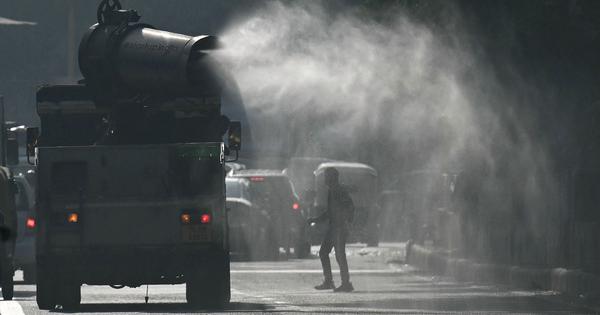
Twenty-three of 39 air quality monitoring stations in Delhi recorded Air Quality Index reading above 400, categorised as “severe”, at 11.06 am on Sunday, according to data from the Sameer application, which provides hourly updates from the Central Pollution Control Board.
The overall AQI for the national capital stood at 389, placing it in the “very poor” category, the data showed.
Among the areas reporting the highest pollution levels were Bawana (441), Rohini and Jahangirpuri (434), Mundka (431) and RK Puram (422).
On Saturday, the city’s average AQI at 7 am was 335, also in the “very poor” category, according to the Central Pollution Control Board.
An index value between 0 and 50 indicates “good” air quality, between 51 and 100 indicates “satisfactory” air quality and between 101 and 200 indicates “moderate” air quality. As the index value increases further, air quality deteriorates. A value of 201 and 300 means “poor” air quality, while between 301 and 400 indicates “very poor” air.
Between 401 and 450 indicates “severe” air pollution, while anything above the 450 threshold is termed “severe plus”.
Air quality deteriorates sharply in the winter months in Delhi, which is often ranked the world’s most polluted capital.
Stubble burning in Punjab and Haryana, along with the lighting of firecrackers, vehicular pollution, falling temperatures, decreased wind speeds and emissions from industries and coal-fired plants contribute to the problem.
The air quality in the national capital has been in the “poor” or worse categories since mid-October, leading to the implementation of incremental anti-pollution measures under the Graded Response Action Plan.
Amid the increasing air pollution, Chief Minister Rekha Gupta on Friday announced staggered working hours for employees of the Delhi government and the Municipal Corporation of Delhi for a three-month period.
The staggered timings will be in place from November 15 to February 15.
During this period, offices of the Delhi government will function from 10 am to 6.30 pm and those of the municipal corporation from 8.30 am to 5 pm. The Delhi government offices currently function from 9.30 am to 6 pm and the MCD between 9 am and 5.30 pm.
The Delhi government said that the current 30-minute timing gap between the two organisations leads to heavy vehicular traffic in the national capital in the morning and evening, which contributes to air pollution.
The work hours were being changed to ensure that the spike in traffic is distributed evenly to curb pollution level.
📰 Crime Today News is proudly sponsored by DRYFRUIT & CO – A Brand by eFabby Global LLC
Design & Developed by Yes Mom Hosting






